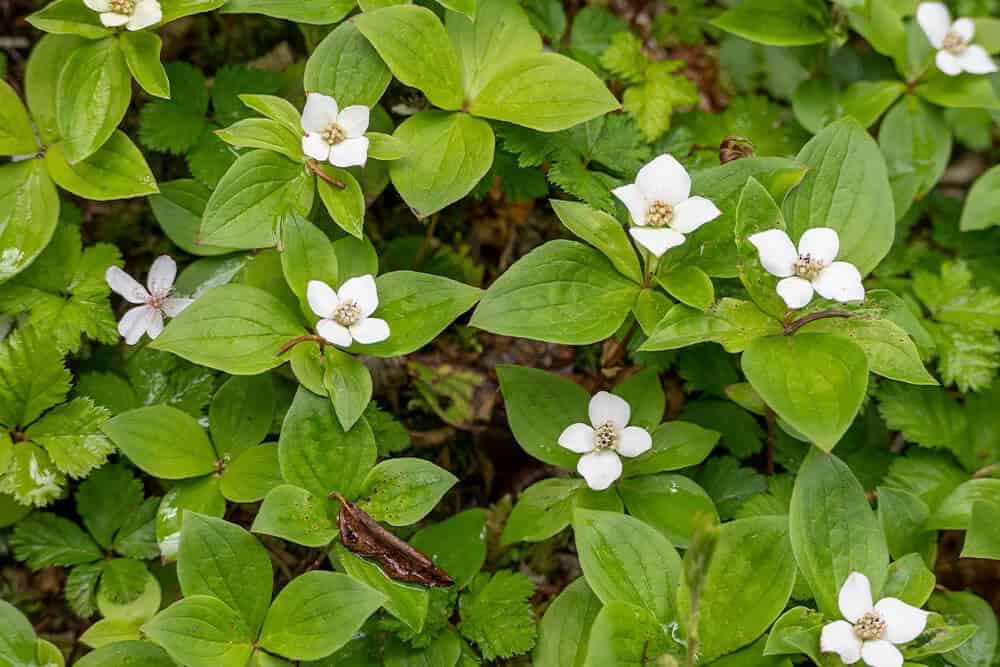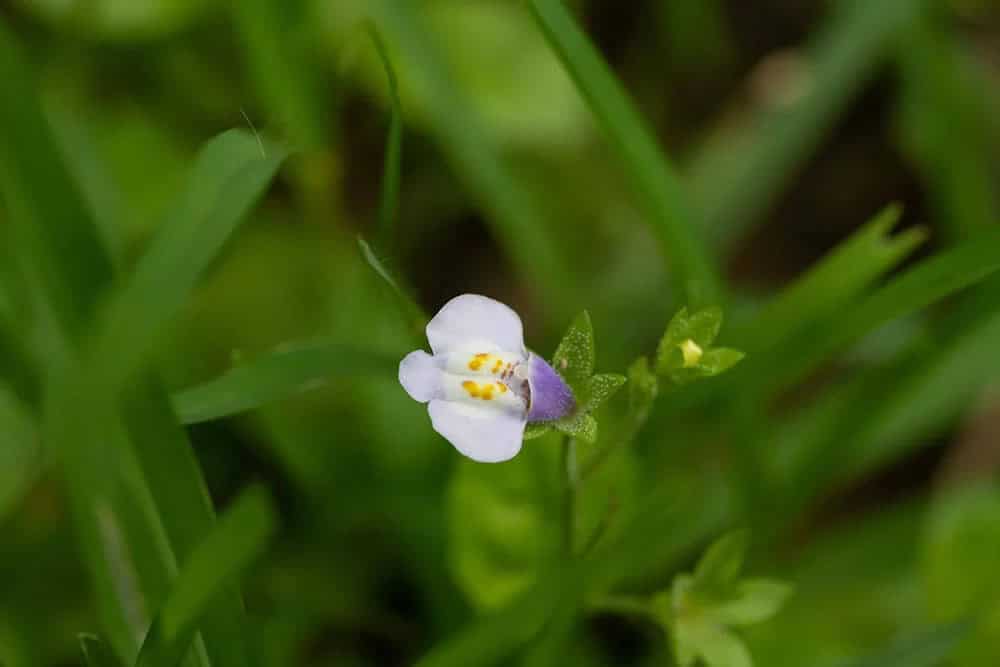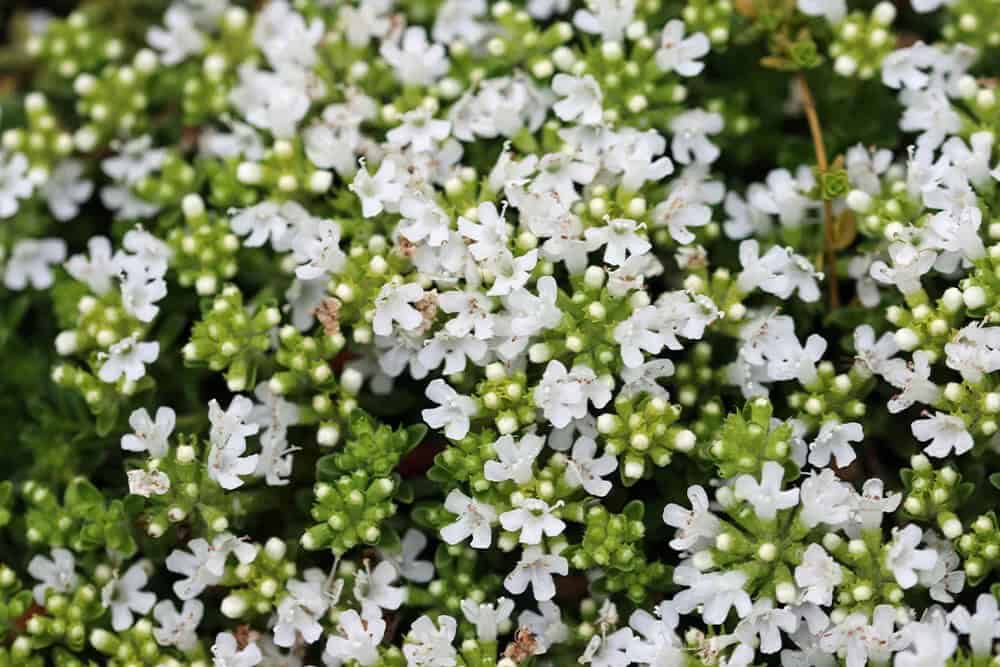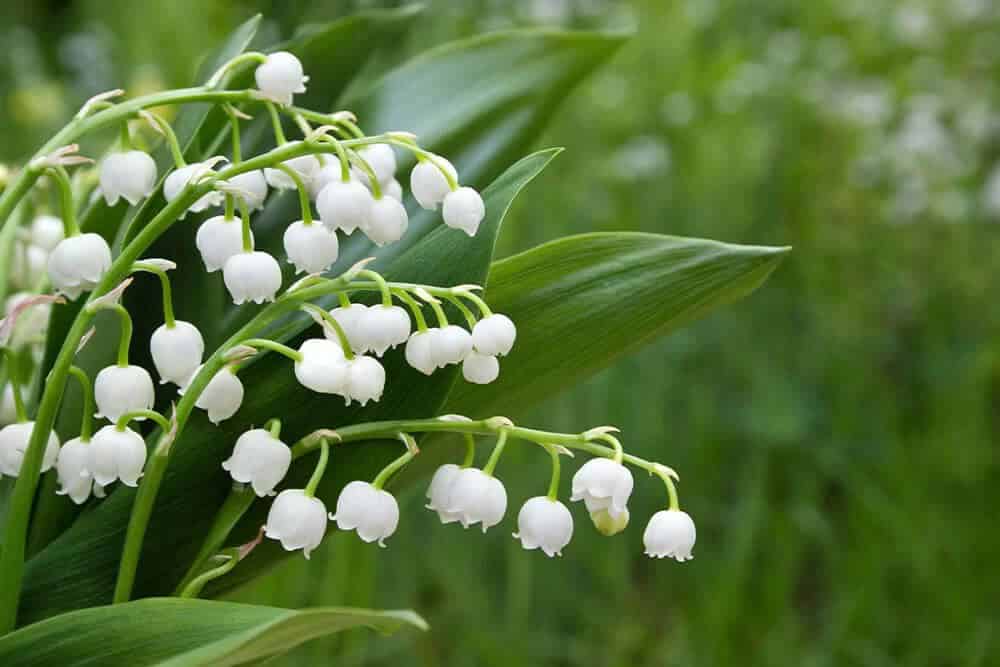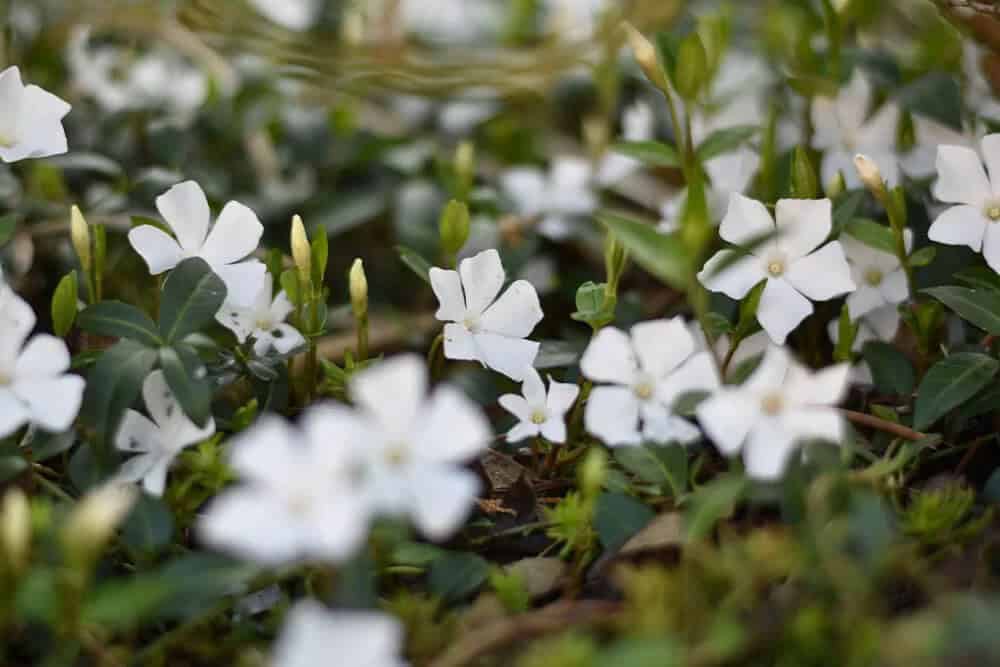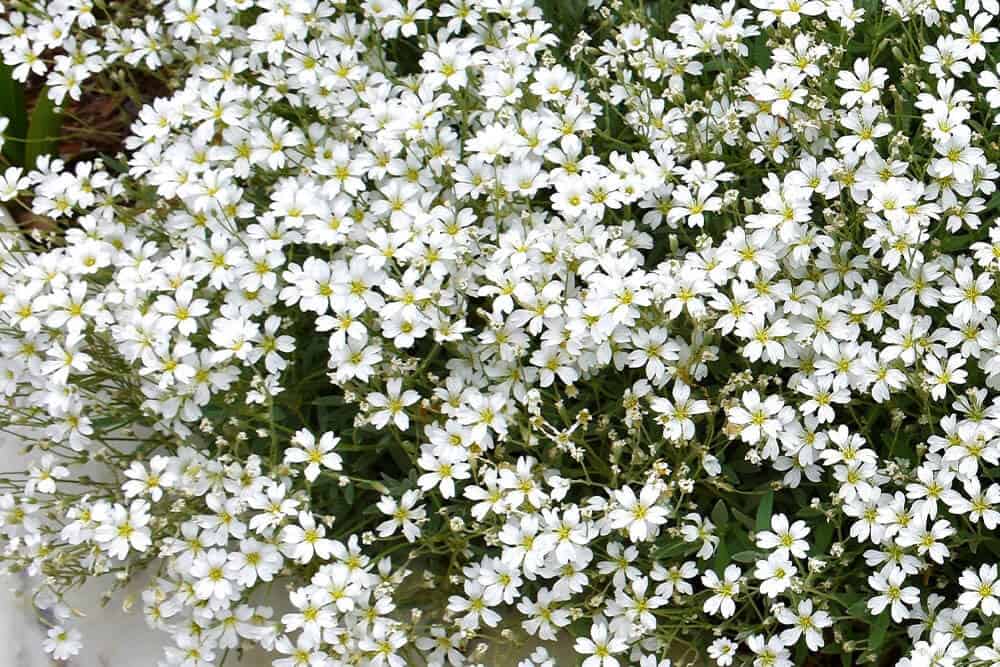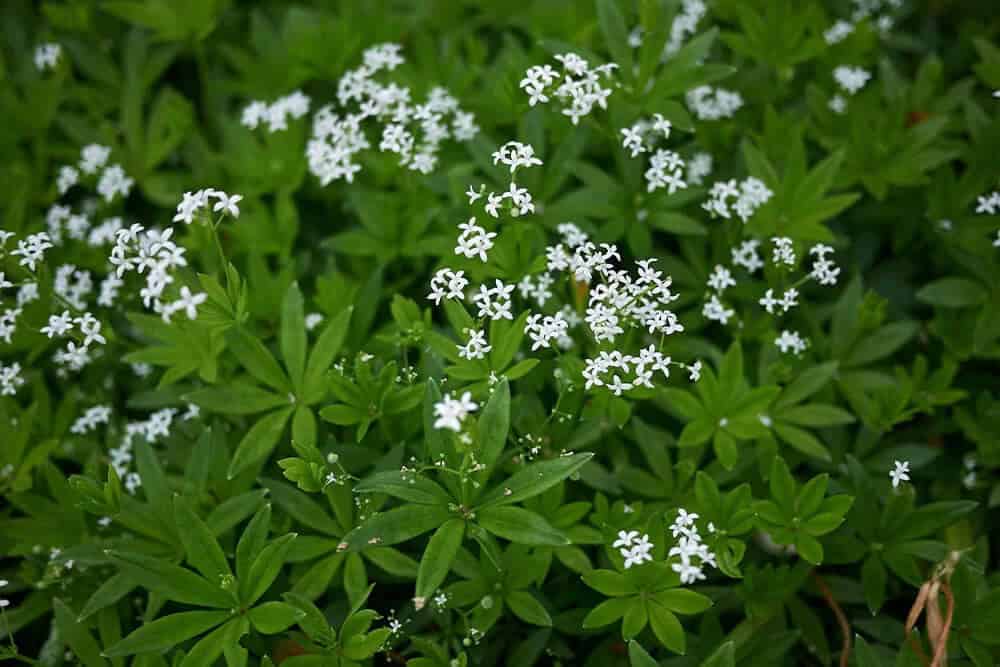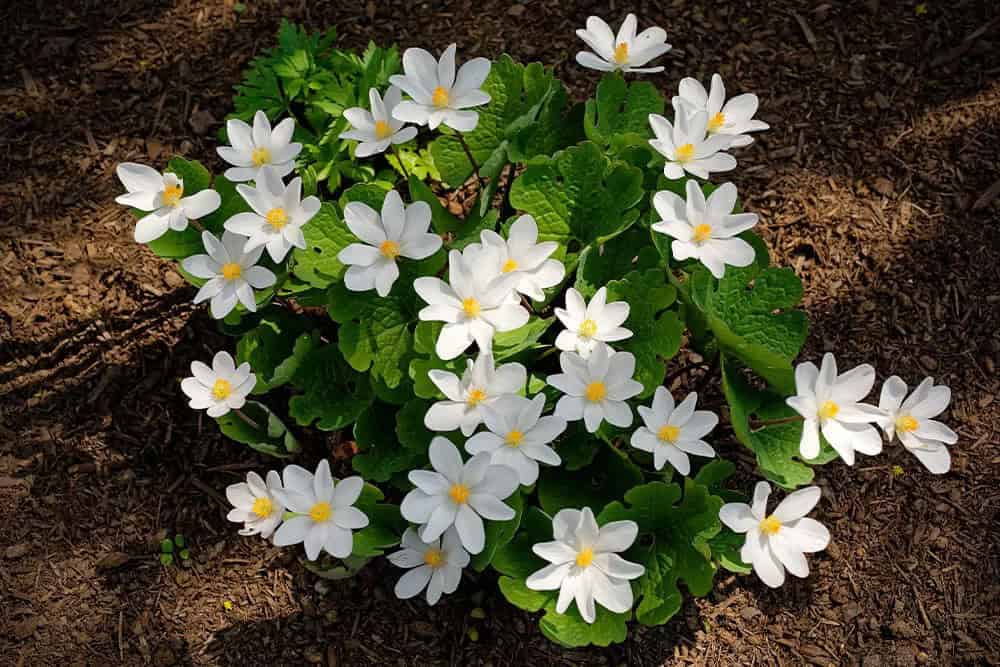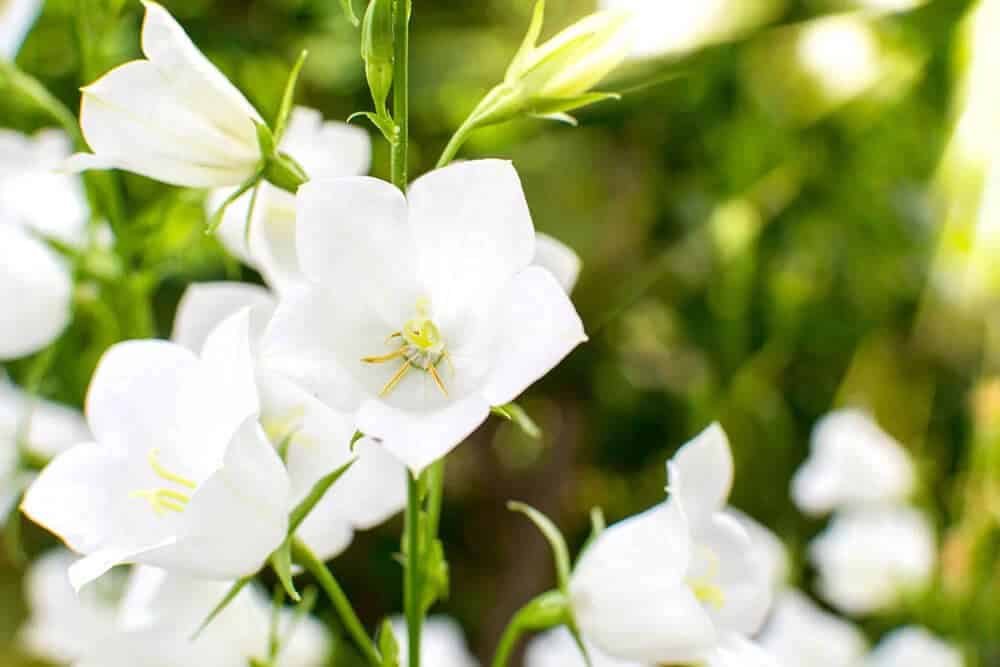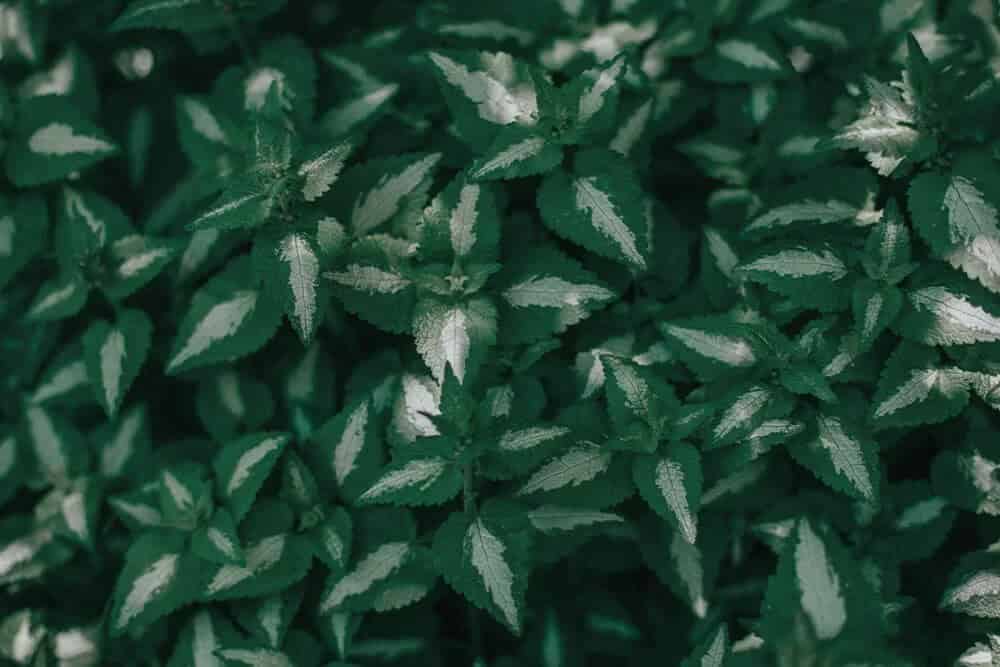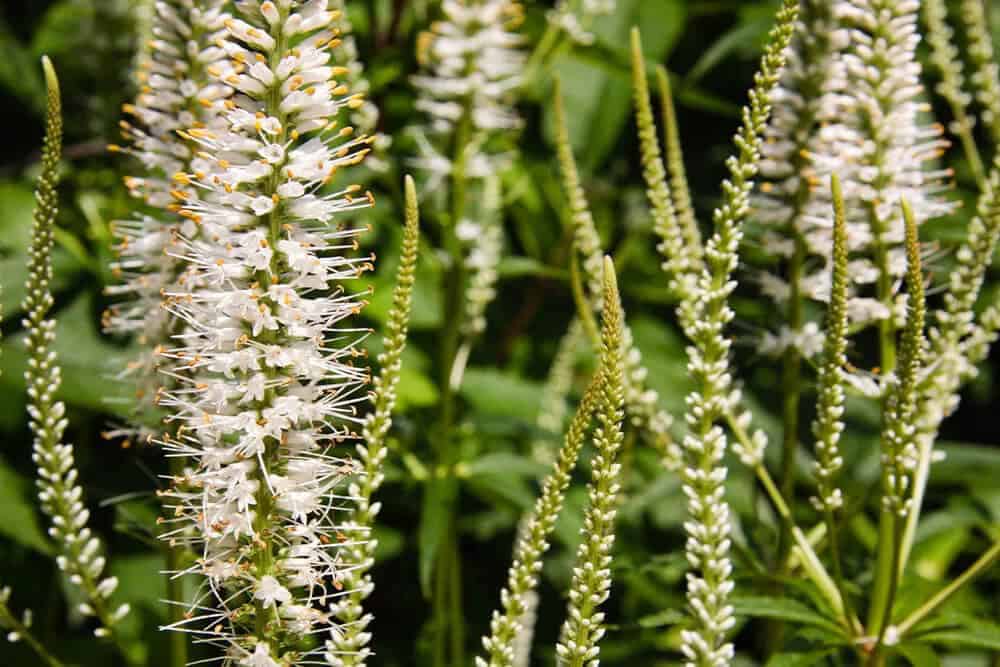While a lush garden is certainly a thing of beauty, there’s more to creating a thriving outdoor space than just planting trees and shrubs. One crucial element that can bring your landscape together is a well-chosen ground cover. Not only do these low-growing plants add color and texture to the gaps between taller specimens, but they also serve a practical purpose by suppressing weeds and reducing maintenance.
In this article, we’ll delve into 20 of the best white-flowered ground covers you can grow in your garden, each one offering its own unique combination of aesthetic appeal and functional benefits.
Key Takeaways
As you explore the world of white flower ground cover plants, a few recurring themes emerge. One of these is their compact nature – most species typically grow to be under a foot tall. Another key characteristic is their ability to spread rapidly, often outpacing weeds and other vegetation. Additionally, white flower ground covers can be either deciduous or evergreen, offering a range of possibilities for gardeners. Interestingly, many popular cultivars are also part of this group.
Furthermore, these plants excel at suppressing weed growth, making them an attractive option for those seeking low-maintenance landscaping.
20 Stunning White Flower Ground Cover Plants to Complete Your Planting Beds
Bishop Weed (Aegopodium podagraria)
Bishop weed may be more at home in wild meadows than in manicured gardens, but its stunning white blooms make it a compelling choice for anyone seeking a flowering ground cover. While it’s less common to spot this lovely plant in domestic settings, bishop weed is actually an excellent option for those looking to add some verdant charm to their yard.
One of the key advantages of this plant is its relatively modest stature, reaching only about half a foot to one foot tall, making it easy to incorporate into existing garden designs. The real showstopper, however, is the delicate clusters of white flowers that resemble tiny bouquets, adding a touch of whimsy and romance to any landscape.
Candytuft (Iberis sempervirens)
One of the most fascinating aspects of the candytuft plant is its remarkable adaptability to different environments. Unlike many plants that are fixed in their growth habits, candytuft has the ability to modify its behavior based on the local climate and conditions. In warmer regions, it thrives as an evergreen shrub with a woody stem, whereas in colder areas, it grows as a perennial ground cover that dies back during winter only to re-emerge in spring.
Notwithstanding these variations, candytuft consistently produces charming rounded clusters of white flowers each spring, making it a delightful addition to any garden or landscape.
Creeping Dogwood (Cornus canadensis)
While some plants may receive more attention than others, it’s crucial to acknowledge those that often fly under the radar. The creeping dogwood is one such example – despite being part of the same family as its more popular relatives, flowering dogwood and kousa dogwoods, it tends to get overshadowed. However, this underrated native ground cover plant has a lot going for it: its leaves are lovely, its flowers boast large white bracts, and its fruit is just as vibrant.
A true hidden gem, the creeping dogwood deserves recognition for its unique characteristics.
Creeping Mazus (Mazus pumilus)
For those seeking ground cover plants, immediate results are often the goal. While there isn’t a species that can provide instant gratification, some plants grow remarkably fast. The creeping mazus is an exemplary example, boasting rapid colonization and impressive resilience. Native to Asia, this plant thrives in abandoned areas, effortlessly spreading its roots without deliberate human intervention.
One of the most attractive features of creeping mazus is its delicate, star-shaped flowers that harmoniously combine white and soft purple hues.
Creeping Phlox (Phlox subulata)
Creeping phlox is a stunning choice for adding a splash of vibrant color to your garden during the early spring months. This flowering ground cover boasts an explosion of blooms that can create a kaleidoscope effect, transforming your landscape into a colorful carpet. While white-flowering varieties are popular, it’s not uncommon to find pink or purple hues, each one adding its own unique charm to the overall visual display. The best part?
Combining multiple colors in a single planting scheme can lead to a truly show-stopping effect that will leave you and your guests in awe.
Creeping White Thyme (Thymus serpyllum ‘Albus’)
While many people know and use thyme as a versatile herb in cooking, it’s also a beautiful ornamental ground cover. Creeping thyme spreads along the ground, filling gaps between pavers or other plants in your garden bed, while releasing a pleasant fragrance into the air. One of its most striking features is the vibrant purple flowers that many creeping thyme varieties produce.
However, if you’re looking for a white-flowered variety, seek out Thymus serpyllum ‘Albus’, a cultivated type specifically bred to showcase its snowy blooms.
Crocus (Crocus)
In addition to its early spring-blooming counterpart, another notable plant that thrives in this season is the crocus. Its unique cup-shaped flowers, which come in a range of colors including white, burst forth from the ground as winter’s chill begins to fade. While their impact on the landscape may be fleeting, with blooms only lasting for a brief period, they play a vital role by providing a splash of color when other plants are still dormant.
Moreover, their emergence serves as a reassuring harbinger of spring’s arrival, signaling the end of winter’s quiet and the start of new life.
Lily of the Valley (Convallaria majalis)
The lily of the valley’s delicate charm lies in its striking floral arrangement. Each tiny white bloom hangs from a slender stem that begins vertically before curving dramatically downward. The foliage provides a lush backdrop, with deep green leaves shaped like pointed ovals that stand upright. A native plant to many regions across North America and Eurasia, lily of the valley is known for its rapid spread and modest height, typically reaching around six inches at most.
Myrtle (Vinca minor ‘Alba’)
One of the most sought-after and dependable evergreen shrubs for garden enthusiasts is Myrtle. Its broad leaves, shaped like ovals, remain a vibrant green hue throughout the seasons, providing consistent coverage. When spring arrives, this plant bursts forth with stunning pinwheel-shaped flowers that typically showcase a rich purple color. However, those looking for an added touch of elegance can opt for Vinca minor ‘Alba’, which guarantees pure white blooms year after year.
Pachysandra (Pachysandra terminalis)
Pachysandra, a highly sought-after groundcover in residential landscapes, owes its popularity to its reliable and attractive characteristics. One of the most notable features is its evergreen foliage, which maintains a dense and lush appearance throughout the year. Additionally, Pachysandra spreads rapidly without compromising on density, making it an ideal choice for areas where coverage is desired.
Beyond its impressive growth habits, these plants also produce small white flowers that add visual interest to the landscape. The cylindrical shape of each flower, accompanied by its fuzzy texture, adds a touch of whimsy to the overall appearance. Furthermore, Pachysandra is remarkably resilient and can thrive in low-light conditions, making it an excellent option for areas with limited sunlight.
Snow in Summer (Cerastium tomentosum)
While it’s uncommon for snowfall to occur during the summer months, Snowfall in summer is actually possible through a unique type of ground cover. This plant produces small rounded mounds that resemble freshly fallen snow in the midst of hot summer days. Its large size compared to other ground covers adds to its striking appearance. In addition to its snow-like appearance, Snowfall also boasts pure white flowers that bloom in the summer, further enhancing its wintry effect.
The stems and leaves of this plant are light green, sometimes exhibiting subtle hints of white, which complements the snowy appearance and creates a visually stunning display.
Sweet Woodruff (Galium odoratum)
When it comes to selecting plants for a landscape, gardeners often face numerous challenges. One of the most significant hurdles is overcoming the limitations imposed by insufficient sunlight. Fortunately, there are some excellent white flowering ground cover options that can thrive in such conditions. Sweet woodruff is an exemplary choice, capable of tolerating partial to full shade.
This versatile plant not only adapts well to a range of soil types – including acidic, neutral, and alkaline soils – but also produces beautiful white flowers and attractive frilly leaves, making it a delightful addition to any garden.
White Ajuga (Ajuga reptans ‘Alba’)
When seeking a ground cover that not only adds aesthetic appeal but also withstands occasional foot traffic, ajuga is an excellent choice. This adaptable plant thrives in favorable conditions and can tolerate moderate pedestrian activity. Characterized by its purple-tinged flowers and foliage, white ajuga stands out with its pristine blooms.
By replicating its preferred growing conditions, you’ll find that this variant requires minimal maintenance, making it a low-fuss option for garden enthusiasts.
White Bloodroot (Sanguinaria canadensis)
White bloodroot, also known as Indian paint, bloodwort, or simply bloodroot, is a versatile ground cover that showcases its beauty through showy flowers. Each bloom features large petals surrounding a bright yellow center, with the delicate blooms scattering across the ground. The plant’s foliage consists of vibrant green leaves with a distinctive shape, adding to its visual appeal. When growing in its natural habitat, white bloodroot thrives in moist woodland areas.
If you’re considering this plant as a suitable option for your yard, aim to recreate these conditions by providing it with similar environmental settings.
White Campanula (Campanula betulifolia)
The white campanula boasts an even more striking floral display than its counterpart, the white bloodroot. This perennial ground cover produces an abundance of large, cup-shaped blooms that are truly impressive. Each flower features a distinct yellow reproductive structure at its center, creating a beautiful contrast. While slightly taller than many other plants on our list, reaching over a foot in height, it still provides excellent horizontal coverage.
White Ground Cover Rose (Rosa ‘Flower Carpet White’)
While many people are familiar with traditional red or pink roses in shrub form, there’s a world of variation beyond that. Some types of roses grow as vines or miniature trees, offering unique forms and structures. Furthermore, some rare species can even serve as ground covers, such as the white ground cover rose. This type of rose spreads along the ground, producing classic white blooms reminiscent of traditional roses, but with a distinctively low-growing profile.
White Rock Cress (Arabis caucasica)
As the white rock cress sprawls and flourishes, it’s easy to be mesmerized by its sweeping display of pure white blooms. Yet, amidst this sea of beauty, each individual flower deserves attention. Each delicate bloom boasts four silky white petals that converge around a bright yellow center, perched atop slender stems that elevate them just above the lush foliage.
This understated yet stunning plant’s main attraction may be its sprawling habit, but it’s the intricate details of each flower that truly make it shine.
White Spotted Deadnettle (Lamium maculatum ‘White Nancy’)
The beauty of the plants on our list doesn’t stop at their stunning white flowers. Many of them may lack unique foliage colors, but not the white spotted deadnettle. This exceptional plant boasts not only captivating white blooms, but also intriguing leaves that add an extra layer of visual interest to your garden. The loose triangular shape of each leaf is a standout feature, with a predominantly green hue infused with a subtle white tint that makes it truly eye-catching.
White Stonecrop Sedum (Sedum album)
Stonecrop sedum plants possess an extraordinary ability to thrive in conditions that would be challenging for many other species. Specifically, they can tolerate dry soils with limited nutrient availability and bask in full sunlight. Furthermore, these plants are adorned with small white flowers, a characteristic that sets them apart from other sedum varieties.
Moreover, the white stonecrop sedum exhibits remarkable resistance to pests and diseases, making it an attractive choice for gardeners seeking low-maintenance options. Provided you avoid planting areas prone to waterlogging, this species of sedum will continue to flourish year after year, offering a reliable and hardy addition to any landscape.
White Veronica (Veronica longifolia ‘Vernique White’)
The white veronica plant distinguishes itself from others in several ways. Its exceptional height is largely due to its striking flowers, which grow in long, spike-like formations that reach upwards towards the sky. On the ‘Veronique White’ cultivar, these flowers are a brilliant white hue, creating a striking visual contrast against the surrounding foliage.
As such, if you’re looking for a groundcover that adds depth and visual interest to your garden’s floor level, while also boasting the ability to stand out among other plant types, then the white veronica is an excellent choice.
Frequently Asked Questions About White Flower Ground Cover Plants
What is the Fastest Growing Flowering Ground Cover?
When it comes to choosing the right ground cover, speed of growth is a crucial factor for many gardeners. While there isn’t one clear winner when it comes to the fastest-growing option, some plants do stand out for their impressive ability to spread quickly. These rapid-growers often have a dual nature – while they can rapidly cover large areas, they also require more maintenance and control to keep them in check.
Some popular options for fast-growing ground covers include myrtle, phlox, thyme, and sweet woodruff, but it’s essential to consider both the benefits and drawbacks of each plant before making a decision.
What is the Best Ground Cover to Prevent Weeds?
Ground cover plants offer an additional benefit by suppressing unwanted vegetation in your garden. This is because they create a dense layer of foliage that prevents sunlight from reaching weeds as they attempt to germinate. The more effectively a ground cover can blanket the soil with its leaves, the greater its ability to inhibit weed growth.
Excellent choices for this task include creeping phlox, thyme, ajuga, sweet woodruff, and pachysandra, all of which are capable of forming a dense mat that starves weeds of the sunlight they need to thrive.
What is the Toughest Ground Cover?
In addition to their aesthetic appeal, many ground cover plants possess remarkable durability and resilience. One such example is the white ajuga plant, which boasts an impressive capacity for withstanding heavy foot traffic. Despite being trodden upon, it will persist in thriving, its beauty and vitality unimpaired.
Another type of ground cover plant that exemplifies this quality is sedum, whose robustness stems not from its ability to withstand physical abuse but rather its tolerance for unfavourable growing conditions. Sedum can flourish in areas where other plants might struggle or quickly succumb, making it an exemplary choice for gardeners seeking low-maintenance yet hardy ground covers.
What is the Fastest-Growing Evergreen Ground Cover?
Fast-growing ornamental evergreens like creeping thyme, pachysandra, and myrtle are ideal choices for covering large areas of your garden quickly. These hardy plants thrive during each growing season, rapidly spreading to fill gaps and provide year-round coverage.
The benefits of fast-growing ground covers are twofold: they swiftly cover bare spots, eliminating the need for winter mulching or other temporary solutions; and they maintain their foliage throughout the seasons, ensuring a lush, verdant appearance even in the dead of winter.
What is the Fastest-Growing Ground Cover for Shade?
20 Effective Types of White Flower Ground Cover Plants that Fully Cover Your Garden Floor
Despite their compact size, white flower ground covers possess an undeniable charm, rivaling larger plants in terms of visual appeal. Their uniformity in color and variety of forms allow them to seamlessly integrate into any garden setting. Upon selecting the perfect specimen for your outdoor space, you can expect it to spread rapidly, blanketing the surrounding area with vibrant white blooms that will surely captivate your senses.


